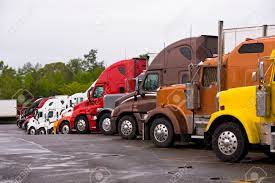warehousing and logistics are two essential components of the supply chain that work in tandem to ensure the efficient movement of goods from manufacturers to consumers. In this blog, we will explore the intricacies of warehousing and logistics, their significance, and how they complement each other in delivering products to our doorsteps.
Warehousing: The Backbone of the Supply Chain
Warehousing plays a pivotal role in the supply chain by providing a storage and distribution point for products. Its functions extend beyond mere storage; warehouses are essential for inventory management, order fulfillment, and quality control. Here’s a closer look at the key aspects of warehousing:
1. Inventory Management
Effective inventory management is crucial to ensure that products are available when needed. Warehouses are equipped with advanced systems that track and manage inventory, helping businesses minimize stockouts and overstock situations.
2. Order Fulfillment
Warehouses are hubs for order processing and fulfillment. Orders are received, processed, and prepared for shipment from these facilities. Efficient order fulfillment is vital for meeting customer expectations.
3. Quality Control
Warehouses are equipped to inspect, assess, and ensure the quality of products. This is especially important for industries with perishable or sensitive goods.
4. Storage Solutions
Warehouses offer various storage solutions, including rack systems, shelving, and climate-controlled environments, tailored to meet the unique needs of different products.
Logistics: The Art of Movement
Logistics is the process of planning, implementing, and controlling the efficient flow and storage of goods and services from the point of origin to the point of consumption. It encompasses various aspects of transportation, distribution, and supply chain management. Let’s delve into the key functions of logistics:
1. Transportation
Logistics involves selecting the most appropriate and cost-effective transportation methods, such as road, rail, air, or sea, to move goods from one location to another. Timely and reliable transportation is essential to meet delivery deadlines.
2. Distribution
Distribution centers, often located near major markets, play a vital role in the logistics process. They receive products from manufacturers or warehouses and distribute them to retailers or directly to consumers.
3. Supply Chain Management
Logistics professionals are responsible for managing the entire supply chain, coordinating activities, and ensuring a seamless flow of goods. This involves planning routes, tracking shipments, and optimizing operations.
The Synergy: How Warehousing and Logistics Work Together
The relationship between warehousing and logistics is one of mutual dependence. Warehouses are where products are stored, managed, and prepared for distribution, making them an integral part of the logistics process. Here’s how they work together:
- Storage and Inventory Management: Warehouses provide a secure place for goods, allowing logistics professionals to efficiently manage inventory levels and track the availability of products.
- Order Fulfillment: When an order is placed, the warehouse team springs into action, picking, packing, and preparing the product for transport. Logistics experts ensure it reaches its destination swiftly and intact.
- Efficient Distribution: Distribution centers often function as logistics hubs, strategically located to minimize transportation costs and time. These centers are pivotal in ensuring products reach consumers promptly.
- Optimizing Supply Chains: Both warehousing and logistics are committed to streamlining the supply chain to reduce costs and enhance efficiency. They collaborate to find innovative solutions to challenges in the movement of goods.
Conclusion
Warehousing and logistics are the unsung heroes of the modern consumer experience. They are responsible for ensuring that the products we order online or purchase from a store are readily available and reach us in a timely and cost-effective manner. The seamless coordination between these two functions is vital for businesses to thrive in an increasingly competitive and global market.
In the fast-paced world of commerce, where customers expect rapid delivery and an array of products at their fingertips, warehousing and logistics are the backbone of success. By understanding and optimizing this symbiotic relationship, businesses can meet consumer demands and stay ahead of the competition.
The next time you receive a package at your doorstep, remember that it’s not just the result of a click of a button but the careful orchestration of warehousing and logistics professionals working behind the scenes to make it happen.
